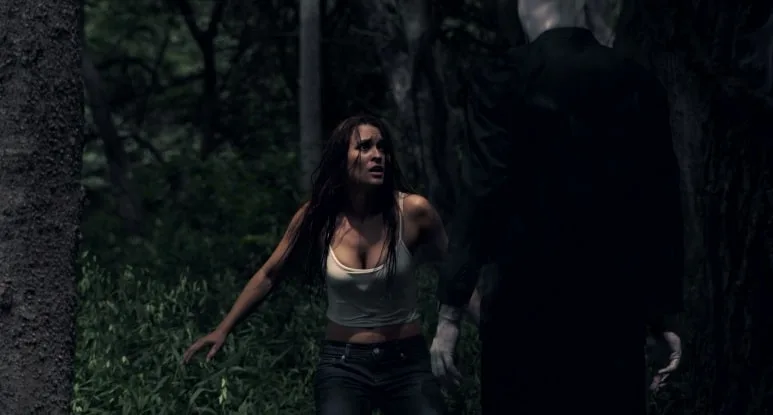
And we’d be dead wrong for thinking as much. Despite an initially intriguing core conceit, Flay proves to be yet another been-there, done-that mish-mash of slasher and ghost story with severely shoe-horned in attempts at a social conscience. Occasionally it threatens to get interesting, but this doesn’t last long, and we’re spiralling off into inescapable tedium in no time at all.
We open on a montage of historical footage, somewhat reminiscent of the prologue of notorious 1976 shocker Who Can Kill A Child in that a) it highlights genuine atrocities from years gone by in a somewhat History Channel-esque manner, and b) it has no bearing whatsoever on the story that follows, and only serves to offer up some pretence of being historically and socially relevant. However, Flay’s opening does establish a couple of significant plot points: there is a set of chains which some evil colonialist invaders slapped on a Native American shaman at the point of his execution (guess what, they flayed his face off). Naturally pissed off by this turn of events, the shaman put a curse on the chains themselves that would see anyone who picked up the chains suffer a fate as grisly as his own.

Anyway, whilst snooping around Billy’s place, Patricia finds herself strangely drawn to an old set of chains, which she intends to use in her artwork. Wouldn’t you know it, she’s found dead in her workshop the very next morning under mysterious circumstances. This prompts the return of Moon, who left home some years earlier out of frustration with her mother’s substance abuse, and an extremely uneasy reunion with her adolescent brother River ensues. While they deal with their grief and struggle to piece together what happened, those curse chains just keep on calling to anyone who gets near them – and once someone has the tenacity to touch them, they soon find themselves experiencing nightmarish visions of being stalked by a big old creepy Slenderman-looking ghoul.

Flay not only fails to present an interesting story, but also fails to deliver on most of the basic blood-and-thunder pleasures it teases. The stunningly irrelevant title implies something very gruesome, but there’s little to no gore on display; nor is there any sex or nudity, which in an odd way makes the blatant objectification of LaMont and co-star Violett Beane feel even sleazier than it would have otherwise, given its total irrelevance to proceedings.
I suppose the most undemanding of horror fans may find Flay a passable enough way to kill an hour and a half – but we really should demand more, even from disposable fare like this. Still, credit where it’s due, the film’s use of digital FX is more impressive than we typically see at this level; this, I think it’s fair to say, is the director’s real area of expertise, and on this evidence I wonder if he’d be better off sticking to that.
Flay will be available digitally in the US on 6th March, via Distribber.
